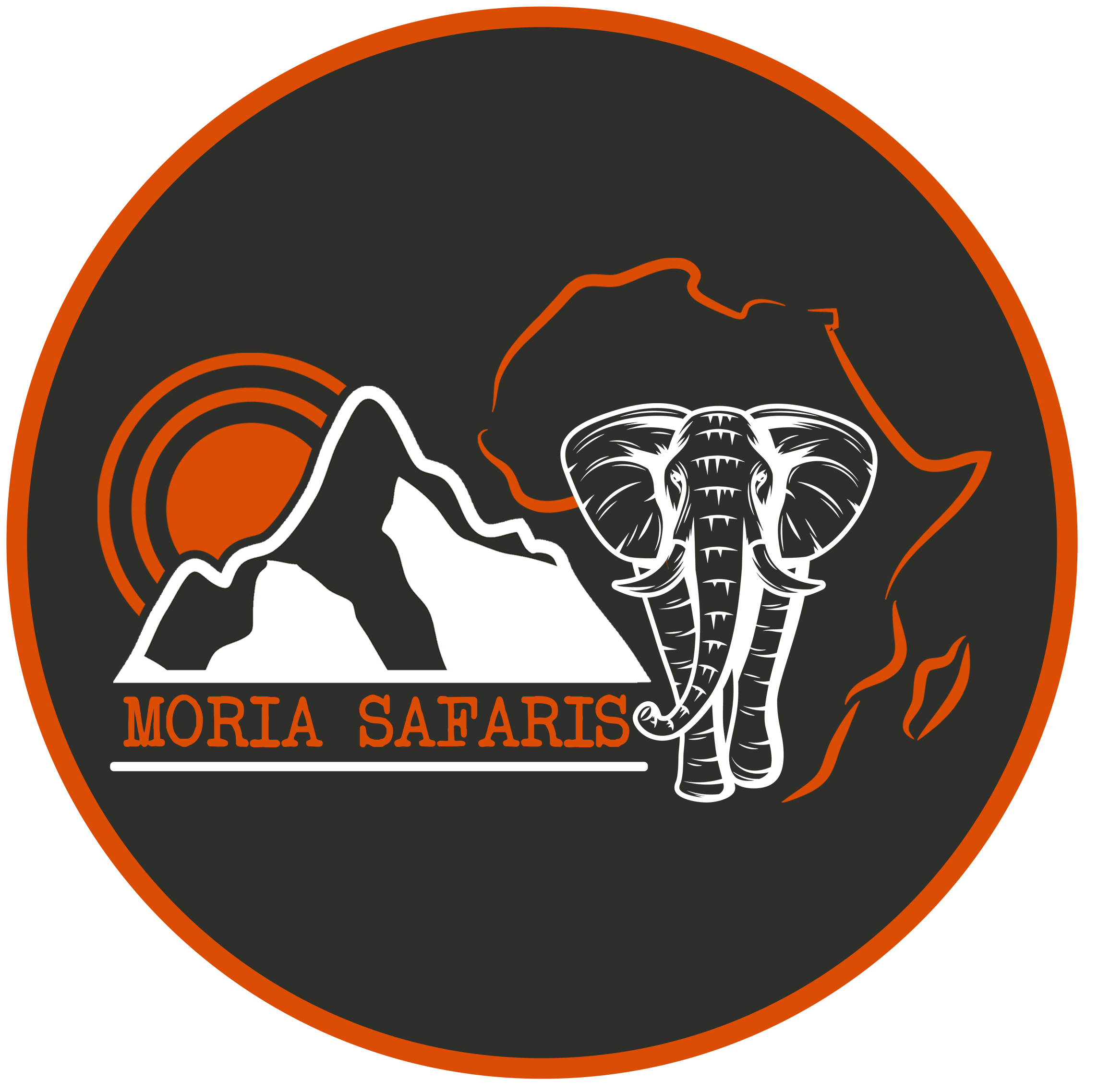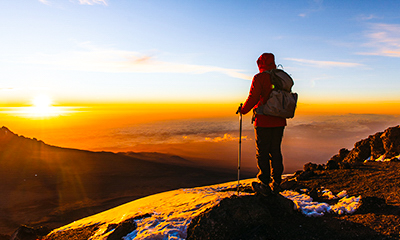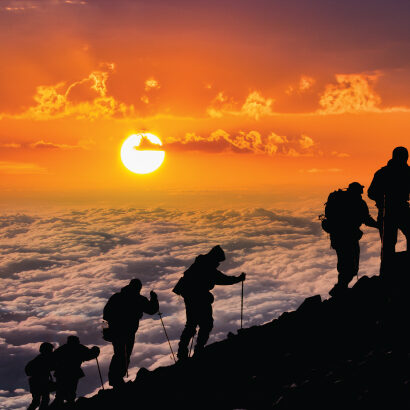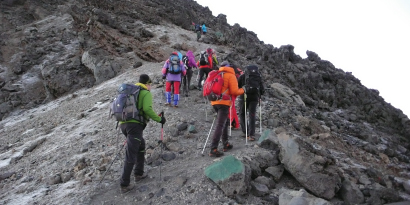Mount Meru
Mount Meru
Mount Meru, often overshadowed by its more famous neighbor Kilimanjaro, is the fifth-highest mountain in Africa and is located within the Arusha National Park in Tanzania. While not as tall as Kilimanjaro, Mount Meru offers a spectacular and challenging climb, as well as stunning scenery and diverse ecosystems

Key features of Mt. Meru
-
-
-
he best time to visit Mount Meru for trekking and climbing largely aligns with favorable weather conditions and optimal trekking conditions. Considering Tanzania's climate, the recommended time to visit Mount Meru is during the dry seasons, which generally span from June to October and from December to February. These months typically offer more stable weather and clearer skies, providing better visibility and comfortable trekking conditions.
Key considerations for the best time to visit Mount Meru:
-
Dry Seasons: The dry seasons (June to October and December to February) are preferred for climbing Mount Meru. These months experience less rainfall, reducing the chances of encountering wet or slippery trails. Clear skies during this period also offer better views of the surrounding landscapes.
-
Weather Conditions: Mount Meru, like many other mountains, can experience unpredictable weather patterns. The dry seasons tend to have more stable weather with lower chances of rain, making for a more enjoyable trekking experience.
-
Visibility: Clear skies during the dry seasons provide better visibility, allowing trekkers to enjoy panoramic views and stunning vistas of the surrounding landscapes, including views of Mount Kilimanjaro and the Arusha National Park.
-
Crowds: Mount Meru generally sees fewer climbers compared to Kilimanjaro. However, the dry seasons might attract more visitors due to favorable weather. If you prefer a quieter trekking experience, consider visiting during the shoulder seasons (March to May and November), although these months might have more rainfall.
-
Wildlife Sightings: The dry seasons coincide with the best time for wildlife viewing in the nearby national parks, such as Serengeti and Ngorongoro Crater. Combining a Mount Meru climb with a safari during these months can offer a comprehensive East African adventure.
While the dry seasons are generally recommended for climbing Mount Meru due to better weather conditions, it's essential to note that weather patterns can vary, and unexpected changes can occur at higher elevations. It's advisable to check weather forecasts and consult with local guides or tour operators for the most updated information before planning your trek up Mount Meru.
-
-
-
Best Time to Visit
- Overview
- Things To Do
- Things To Consider
- Different Exercise Before Climbing Mt. Meru
- Cultural Experiences
The best time to visit Mount Meru for trekking and climbing largely aligns with favorable weather conditions and optimal trekking conditions. Considering Tanzania’s climate, the recommended time to visit Mount Meru is during the dry seasons, which generally span from June to October and from December to February. These months typically offer more stable weather and clearer skies, providing better visibility and comfortable trekking conditions.
Key considerations for the best time to visit Mount Meru:
-
Dry Seasons: The dry seasons (June to October and December to February) are preferred for climbing Mount Meru. These months experience less rainfall, reducing the chances of encountering wet or slippery trails. Clear skies during this period also offer better views of the surrounding landscapes.
-
Weather Conditions: Mount Meru, like many other mountains, can experience unpredictable weather patterns. The dry seasons tend to have more stable weather with lower chances of rain, making for a more enjoyable trekking experience.
-
Visibility: Clear skies during the dry seasons provide better visibility, allowing trekkers to enjoy panoramic views and stunning vistas of the surrounding landscapes, including views of Mount Kilimanjaro and the Arusha National Park.
-
Crowds: Mount Meru generally sees fewer climbers compared to Kilimanjaro. However, the dry seasons might attract more visitors due to favorable weather. If you prefer a quieter trekking experience, consider visiting during the shoulder seasons (March to May and November), although these months might have more rainfall.
-
Wildlife Sightings: The dry seasons coincide with the best time for wildlife viewing in the nearby national parks, such as Serengeti and Ngorongoro Crater. Combining a Mount Meru climb with a safari during these months can offer a comprehensive East African adventure.
While the dry seasons are generally recommended for climbing Mount Meru due to better weather conditions, it’s essential to note that weather patterns can vary, and unexpected changes can occur at higher elevations. It’s advisable to check weather forecasts and consult with local guides or tour operators for the most updated information before planning your trek up Mount Meru.
Mount Meru offers a range of activities and experiences for visitors who want to explore its natural beauty, diverse ecosystems, and cultural significance. Here are some things to do while visiting Mount Meru:
-
Climbing and Trekking: The primary activity on Mount Meru is trekking and climbing to its summit. The trek usually takes around 3-4 days, allowing you to experience diverse landscapes, including lush rainforests, open grasslands, heathlands, and alpine desert zones. The summit offers panoramic views of the surrounding area, including Mount Kilimanjaro on clear days.
-
Momella Gate to Miriakamba Hut Hike: For a shorter hike, consider trekking from the Momella Gate to Miriakamba Hut. This trail passes through forests and offers a glimpse of the mountain’s beauty without the full summit climb.
-
Wildlife Viewing: Explore the rich biodiversity of Arusha National Park, where Mount Meru is located. The park is home to various wildlife, including elephants, giraffes, buffaloes, colobus monkeys, and numerous bird species. Guided wildlife safaris and walking tours are available within the park.
-
Photography: Mount Meru and its surroundings provide fantastic opportunities for photography. Capture stunning landscapes, wildlife, and panoramic views throughout your trek.
-
Cultural Tours: Engage in cultural tours and experiences in nearby villages to learn about the traditions, customs, and daily life of local tribes, such as the Maasai and Waarusha. Visit local markets, interact with community members, and appreciate the cultural heritage.
-
Relaxation and Nature Appreciation: Take time to relax and appreciate the natural beauty surrounding Mount Meru. Enjoy serene moments amid lush forests, tranquil streams, and scenic viewpoints.
-
Birdwatching: Arusha National Park is a haven for birdwatchers, offering opportunities to spot numerous bird species. Bring binoculars and explore the diverse avian life present in the park’s different habitats.
-
Forest Walks and Nature Trails: Explore the park’s various nature trails and forest walks to experience the rich flora and fauna. Some trails offer educational insights into the region’s ecology and plant diversity.
-
Combining with Safari: Consider combining your Mount Meru experience with a safari in nearby national parks, such as Serengeti, Ngorongoro Crater, or Tarangire, to explore more of Tanzania’s wildlife and landscapes.
-
Visit Momella Lakes: Nearby Momella Lakes within the Arusha National Park offer picturesque views and opportunities for birdwatching and wildlife viewing around the lakeshores.
Before embarking on any activity, ensure proper preparation, including obtaining necessary permits, hiring guides if required, and considering weather conditions for a safe and enjoyable experience on Mount Meru.
When preparing to climb Mount Meru, several important factors need consideration to ensure a safe and enjoyable experience. Here are key things to consider before embarking on a climb up Mount Meru:
-
Physical Fitness: Climbing Mount Meru requires good physical fitness and endurance. Engage in regular aerobic exercises, strength training, and hiking to build stamina, leg strength, and cardiovascular endurance.
-
Altitude Acclimatization: While Mount Meru is lower in altitude compared to Kilimanjaro, proper acclimatization is still essential to prevent altitude sickness. Choose a climbing itinerary that allows for gradual ascent and acclimatization stops.
-
Climbing Routes: Research the different climbing routes available on Mount Meru. The most popular route is the Momella Route, but other routes, such as the Northern and Eastern Summits, offer varying landscapes and difficulty levels. Choose a route that suits your experience and preferences.
-
Permits and Regulations: Obtain the necessary permits and adhere to park regulations. Entry permits and climbing fees are required, and it’s essential to follow the guidelines set by the national park authorities.
-
Weather Conditions: Consider the weather patterns and seasons in the region. The dry seasons from June to October and December to February are generally recommended for climbing due to more stable weather and clearer skies.
-
Gear and Equipment: Ensure you have appropriate gear for the climb, including sturdy hiking boots, layered clothing for varying temperatures, a reliable backpack, trekking poles, headlamp, rain gear, and a sleeping bag suitable for the conditions.
-
Guides and Porters: Hiring an experienced guide is highly recommended for safety and navigation, especially in unfamiliar terrains. Porters can assist with carrying gear, making the climb more manageable.
-
Hydration and Nutrition: Stay hydrated by drinking plenty of water throughout the climb. Carry snacks and meals that provide sustained energy. Proper nutrition and hydration are crucial for endurance during the climb.
-
Health and Safety: Prioritize safety by knowing the signs of altitude sickness and communicating any health concerns to your guide. Ensure you have adequate travel insurance covering medical emergencies and evacuation if needed.
-
Responsible Trekking: Respect the environment by adhering to Leave No Trace principles. Dispose of waste properly, follow established trails, and minimize your impact on the mountain’s ecosystems.
-
Emergency Plan: Familiarize yourself with emergency procedures and evacuation routes in case of unforeseen situations. Carry necessary medications and a first aid kit.
By considering these factors and adequately preparing for the climb, you can enhance your chances of having a safe, rewarding, and memorable experience while climbing Mount Meru. Consulting with experienced guides or tour operators can provide valuable insights and assistance in planning your climb.
-
-
cardiovascular fitness. Activities like running, jogging, cycling, swimming, and brisk walking help build stamina and prepare your heart and lungs for the demands of high-altitude trekking.
-
Hiking and Trekking Practice: Incorporate regular hikes and trekking sessions on trails with varied terrain, inclines, and descents. Gradually increase the distance and elevation gain to simulate the conditions you’ll face while climbing Mount Meru.
-
Leg Strengthening Exercises: Focus on exercises that strengthen the lower body, including quadriceps, hamstrings, calves, and glutes. Squats, lunges, calf raises, step-ups, and leg presses are effective for building leg strength and endurance.
-
Stair Climbing: Utilize stairs or a stair climber machine to simulate uphill climbs. Climbing stairs helps strengthen leg muscles, improves cardiovascular fitness, and prepares you for ascending steep sections on Mount Meru.
-
Core Strengthening: Strengthen your core muscles to improve stability and balance. Core exercises such as planks, crunches, Russian twists, and back extensions help enhance core strength and support during the climb.
-
Balance and Agility Training: Incorporate exercises that improve balance, coordination, and agility. Activities like yoga, Pilates, and specific balance drills help improve stability, crucial for navigating uneven terrains.
-
Backpack Training: Train with a loaded backpack to simulate the weight you’ll carry during the climb. Gradually increase the weight and practice hiking with the loaded backpack to condition your body for the additional load.
-
Flexibility and Stretching: Perform regular stretching exercises to improve flexibility and reduce the risk of injuries. Focus on stretching major muscle groups, including hamstrings, quadriceps, calves, hip flexors, and lower back.
-
Interval Training: Incorporate interval training into your routine to improve overall endurance and stamina. Alternate between periods of high-intensity exercise and periods of rest or lower intensity to simulate the variable demands of climbing.
-
Altitude Simulation (if possible): If feasible, consider altitude simulation training or spending time at higher altitudes to help your body acclimate to lower oxygen levels experienced during the climb.
Remember to start training well in advance of your planned climb to allow your body to adapt gradually and avoid overexertion or injuries. Consulting with a fitness professional or trainer can help customize a training plan tailored to your fitness level and climbing goals.
-
Mount Meru, situated within the Arusha National Park in Tanzania, offers visitors not only a thrilling climbing experience but also a chance to explore and engage with the local culture of the surrounding region. While the cultural experiences on Mount Meru might not be as prevalent as some other tourist destinations in Tanzania, there are opportunities to immerse yourself in the local culture and traditions:
-
Local Tribes and Cultural Interaction: The Arusha Region, where Mount Meru is located, is home to various ethnic groups, including the Maasai, Waarusha, and other tribes. Engaging with these communities provides insight into their traditional lifestyles, customs, and cultural heritage. Visitors can interact with locals, visit villages, and learn about their daily lives, traditions, dances, and rituals.
-
Cultural Tours and Visits: Some tour operators offer cultural tours as part of their Mount Meru packages. These tours often include visits to nearby villages, allowing visitors to experience authentic cultural practices, interact with locals, observe traditional crafts, and perhaps participate in activities like beadwork, dancing, or learning about traditional medicine.
-
Local Markets: Exploring local markets in the nearby towns and villages around Mount Meru can be a cultural experience in itself. Visiting markets such as the Arusha Central Market or the nearby Momella Market provides an opportunity to see and purchase locally crafted goods, interact with vendors, and experience the vibrant atmosphere of a bustling market.
-
Cultural Significance: Mount Meru holds cultural significance for the local tribes, including the Waarusha people, who consider the mountain sacred. Learning about the cultural significance of Mount Meru to these communities adds depth to the experience of climbing and exploring the area.
-
Homestays and Community Initiatives: Some initiatives and organizations support community-based tourism and homestay programs in the surrounding areas. Staying with local families, participating in community activities, and contributing to sustainable tourism initiatives can provide an immersive cultural experience while supporting local communities.
-
Cultural Festivals and Events: Depending on the timing of your visit, you might have the opportunity to attend cultural festivals or events organized by the local communities. These festivals often showcase traditional dances, music, ceremonies, and cultural performances.
While cultural experiences might not be the primary focus of a Mount Meru climb, taking the time to engage with local communities, learn about their traditions, and appreciate their way of life can add depth and enrichment to your overall experience in the region. Consulting with tour operators or local guides can help arrange cultural interactions or experiences tailored to your interests while visiting Mount Meru.







